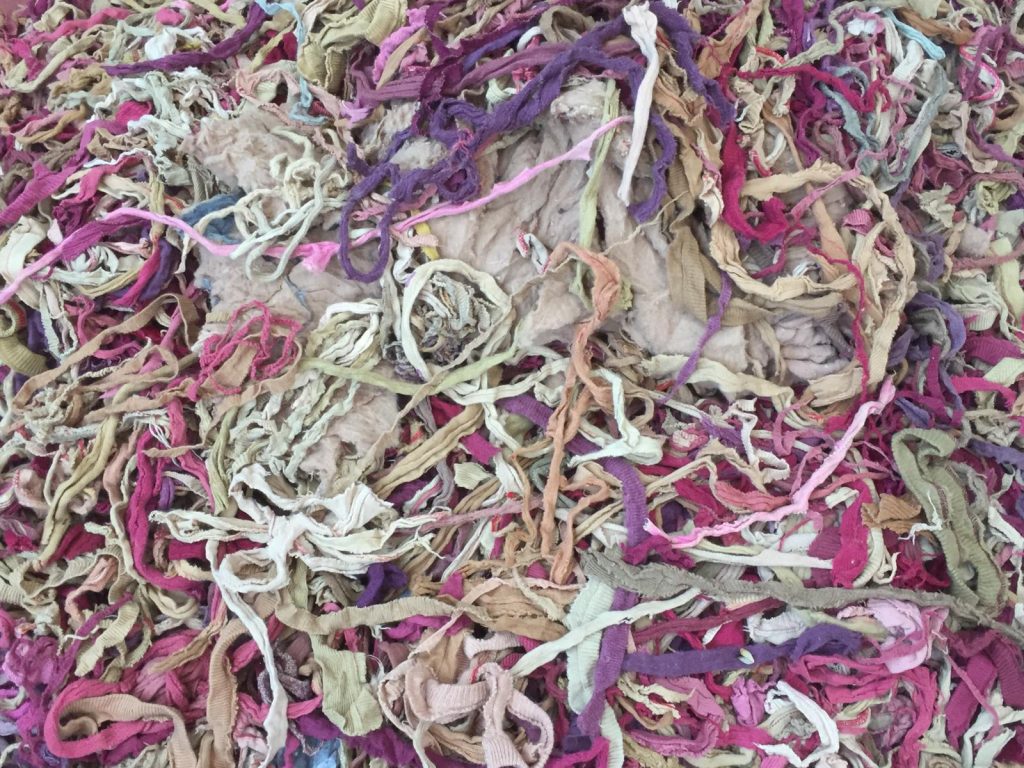Recently, I wrote an article about the regenerated wool produced in the Prato district for the monthly magazine “Terra Nuova“; I already knew the reality of that territory and I also knew that the recovery of wool is a centuries-old tradition but the research for the article gave me the opportunity to deepen, also discovering the historical figure of the ‘cenciaiolo’, the ragman who recovers and selects the ‘rags’, the ‘cenci’, which the companies then use to regenerate and create new fabric. Some ‘cenciaioli’ have become pure entrepreneurs, without ever denying their past made of dust and fatigue and today, which have also earned a monument in the center of Prato, we can say that they were the first champions of green fashion.

And if I have known these fantastic figures it is also thanks to Niccolò Cipriani, founder of the clothing and accessories brand ‘Rifò’ (which in the Tuscan vernacular really means ‘rifaccio’, ‘do it again’), which has made regenerated wool and above all cashmere the workhorse of its own production, started at the end of 2017.
I asked him to be the first guest of our ‘Monthly interview’ after the summer break because I believe that his business is really an example of an all-round ethical fashion, that so many companies should follow if they want to do something concrete, against waste and for the planet.
So Niccolò, as always when I interview my guests, I like to ask first of all the path taken to get to what they are currently doing and, in your case, what drove you to dedicate yourself to the Rifò project. Would you like to talk about the path and the project?
Yes, of course. Rifò was born from my last work experience in Vietnam where I worked on cooperation and development projects and where I realized with my own eyes the problem of overproduction that weighs on the clothing industry. The streets of Hanoi are full of “Made in Vietnam” stores that sell all of the clothes produced in Vietnam, exported to the West, not sold in Europe and sent back to Vietnam so as not to lower Western market prices. Once not sold, these garments are thrown directly into landfills or into an incinerator. Much more is produced in the textile industry than is consumed. In light of this information, it occurred to me to take up a Prato tradition, that of regenerating fabrics, using clothes that are thrown away to make up a new yarn. After this experience in Vietnam, I returned to Prato and went to work with the ‘cenciaioli’, true masters of this profession.


The mythical ‘cenciaioli’! At the heart of Rifò there is above all regenerated wool and in particular cashmere. What is the process that leads to obtaining this type of material? And where do you find the “raw material”?
The process is, for example, this: we take ten old blue cashmere sweaters, we unweave them, we work them to make a new blue cashmere fiber and with that fiber we make a new blue yarn, using only textile scraps and saving on the new consumption of natural resources. The cycle ends by making a new blue cap with that yarn. From a waste to a new product, maintaining the same quality. The raw material is obtained from the organizations that make the collection or directly from our website where people can contact us and send items that they would like to repair or recycle.


In addition to wool and cotton, do you also use other recycled materials? Or do you think you will do it in the future?
Not at the moment but I would like to work on silk and linen but unfortunately they are short fibers, so there are technical limits, because during the recycling process the fiber is shortened and therefore there is need to start from very long fibers.
I see. Prato is a virtuous district and it would be nice if this example were exported both to other Italian territories and abroad. As an entrepreneur, what do you think are the obstacles that do not yet allow this important step?
Unfortunately there are legislative limits that lead to problems on the collection of old garments, currently considered by the law as waste. Beyond this technical limit, I think Prato has all the skills to have a strong and attractive presence abroad.
Do you think it is possible in the future to base a large part of the fashion system on recycling, avoiding waste and encouraging savings and good practices? Or will there always be a need to produce new goods?
Yes, I strongly believe in it, at the same time I think there will be a mix between new organic-grown materials and recycled fibers. I think it is our planet that asks us and sooner or later all people will realize the actual impact of fast fashion.
We hope they do it sooner than later! And last question, ritual: you should ‘nominate’ my next guest, who will be and why?
I name Eticlò’s Sara Zanella because we met her at the beginning of our journey and shared the values of ethics and design with us.
Great Niccolò, thanks for your contribution and good regeneration!


![Mono[PA6] by Freitag, a prova di economia circolare](https://eco-a-porter.com/wp-content/uploads/2024/05/freitag_monopa6_hero_master_16zu9_fin_01.2_0-218x150.jpg)












